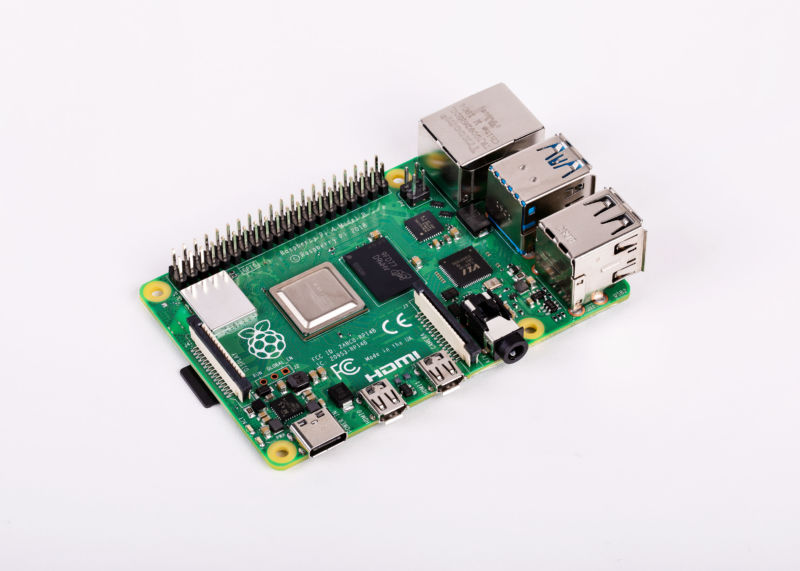
Enlarge / The Raspberry Pi 4. (credit: Raspberry Pi Foundation)
Setting up a Raspberry Pi board has always required a second computer, which is used to flash your operating system of choice to an SD card so your Pi can boot. But the Pi Foundation is working on a new version of its bootloader that could connect an OS-less Pi board directly to the Internet, allowing it to download and install the official Raspberry Pi OS to a blank SD card without requiring another computer.
To test the networked booting feature, you'll need to use the Pi Imager on a separate computer to copy an updater for the bootloader over to an SD card—Pi firmware updates are normally installed along with new OS updates rather than separately, but since this is still in testing, it requires extra steps.
Once it's installed, there are a number of conditions that have to be met for network booting to work. It only works on Pi 4 boards (and Pi 4-derived devices, like the Pi 400 computer) that have both a keyboard and an Ethernet cable connected. If you already have an SD card or USB drive with a bootable OS connected, the Pi will boot from those as it normally does so it doesn't slow down the regular boot process. And you'll be limited to the OS image selection in the official Pi imager, though this covers a wide range of popular distributions, including Ubuntu, LibreELEC, a couple of retro-gaming emulation OSes, and Homebridge. For other OSes, downloading the image on a separate PC and installing it to an SD card manually is still the best way to go.
Read 2 remaining paragraphs | Comments

Enlarge / The Raspberry Pi 4. (credit: Raspberry Pi Foundation)
Setting up a Raspberry Pi board has always required a second computer, which is used to flash your operating system of choice to an SD card so your Pi can boot. But the Pi Foundation is working on a new version of its bootloader that could connect an OS-less Pi board directly to the Internet, allowing it to download and install the official Raspberry Pi OS to a blank SD card without requiring another computer.
To test the networked booting feature, you'll need to use the Pi Imager on a separate computer to copy an updater for the bootloader over to an SD card—Pi firmware updates are normally installed along with new OS updates rather than separately, but since this is still in testing, it requires extra steps.
Once it's installed, there are a number of conditions that have to be met for network booting to work. It only works on Pi 4 boards (and Pi 4-derived devices, like the Pi 400 computer) that have both a keyboard and an Ethernet cable connected. If you already have an SD card or USB drive with a bootable OS connected, the Pi will boot from those as it normally does so it doesn't slow down the regular boot process. And you'll be limited to the OS image selection in the official Pi imager, though this covers a wide range of popular distributions, including Ubuntu, LibreELEC, a couple of retro-gaming emulation OSes, and Homebridge. For other OSes, downloading the image on a separate PC and installing it to an SD card manually is still the best way to go.
Read 2 remaining paragraphs | Comments
February 09, 2022 at 12:09AM

Post a Comment